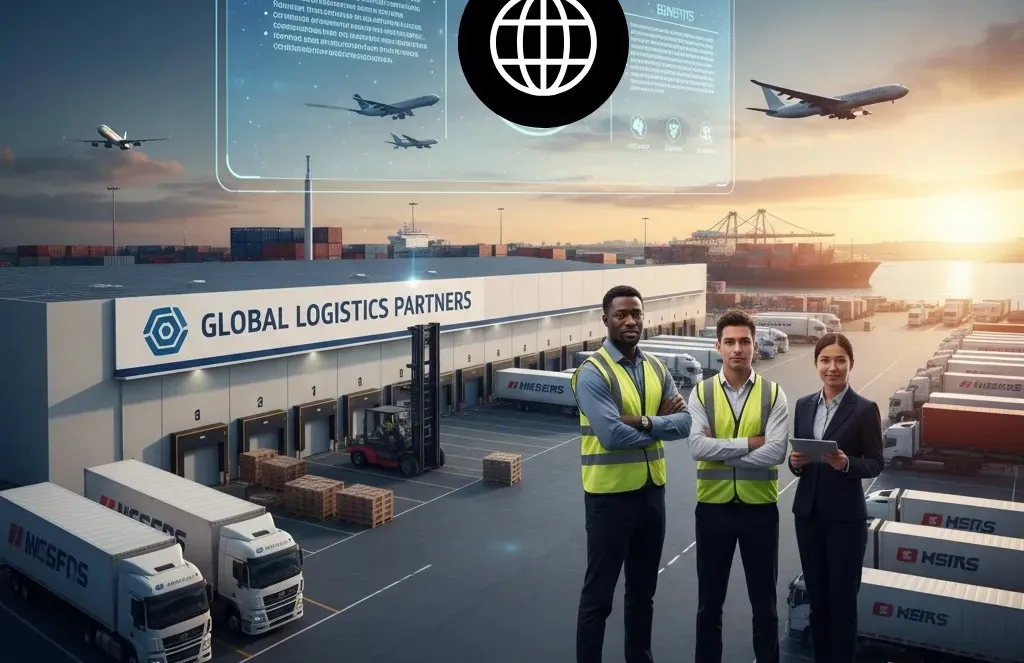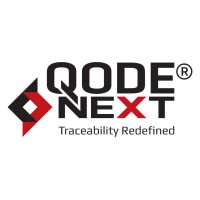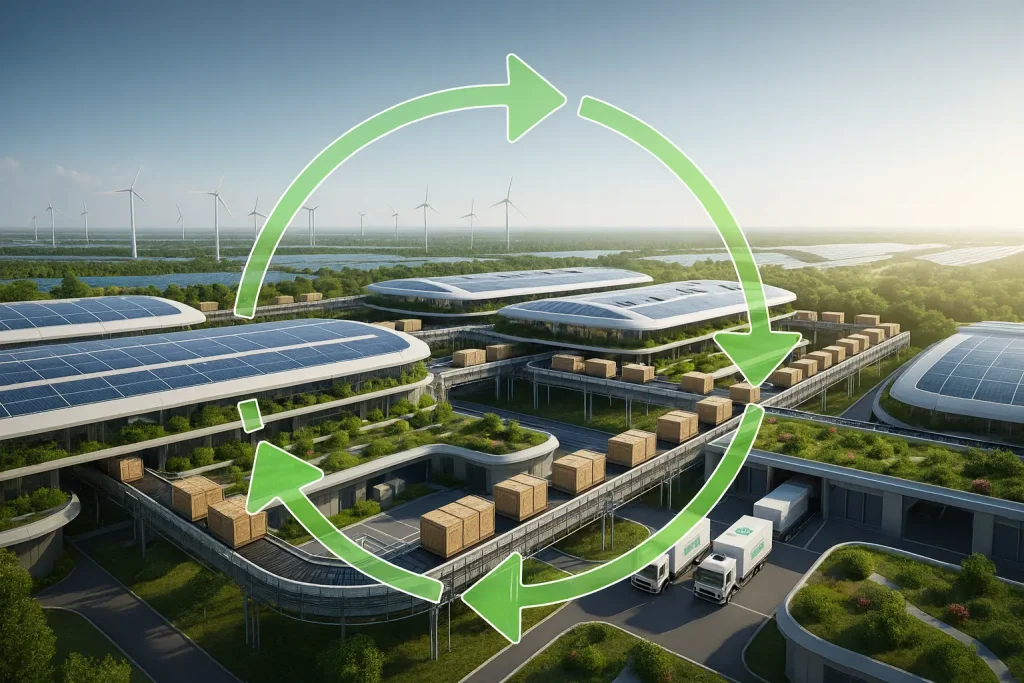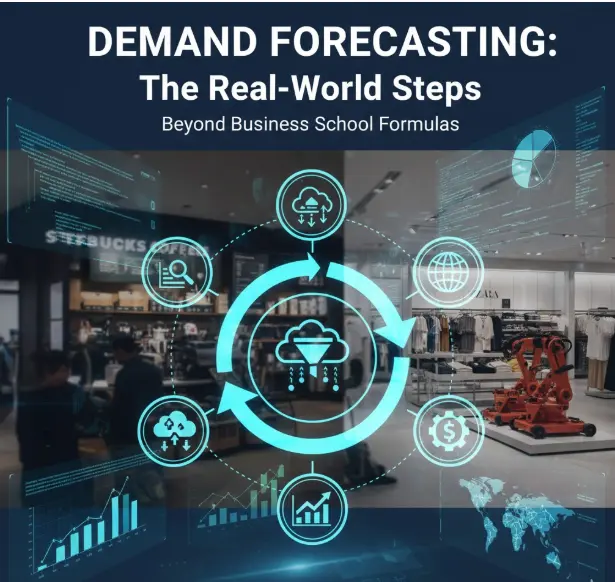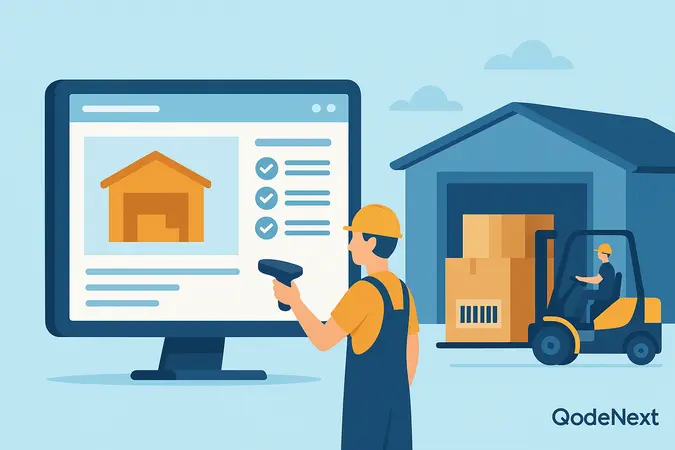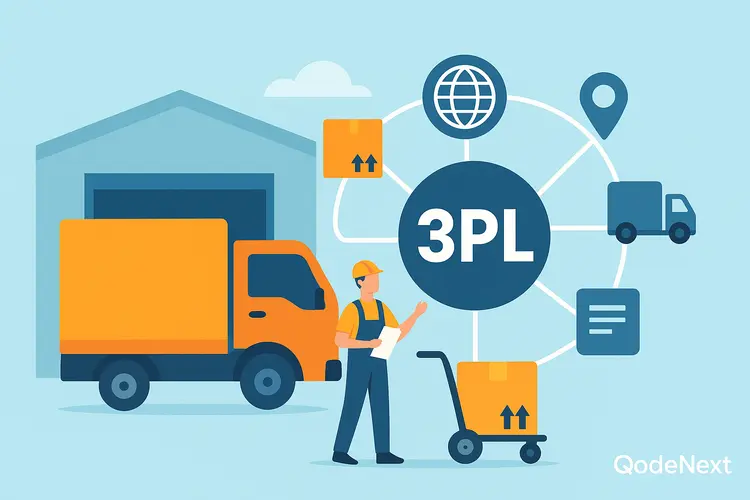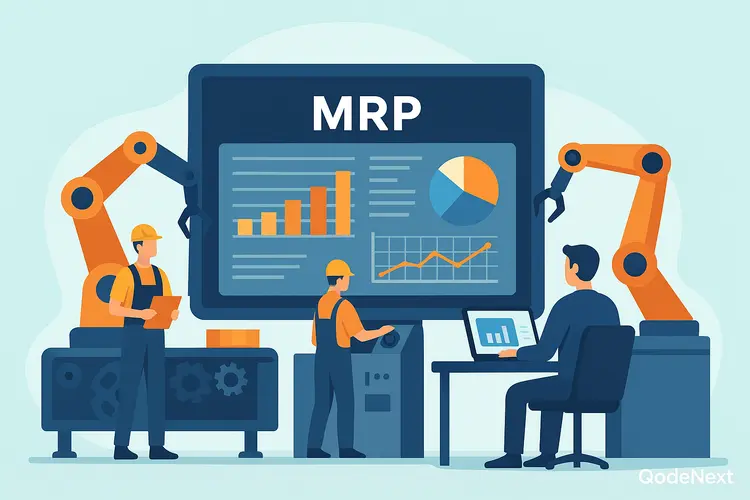Introduction — Why “third party logistics” matters now
Customers expect faster delivery, clear tracking, and easy returns. Building and running warehouses, transport networks, and fulfillment technology costs a lot and requires a lot of effort. This pressure makes third-party logistics important for modern commerce. It enables companies to access logistics resources, systems, and expertise without requiring significant upfront investment. Third party logistics simply means outsourcing one or more logistics functions—like warehousing, transportation, fulfilment, returns, and customs handling—to specialised providers. The strategic impact is significant. According to Armstrong & Associates, the global 3PL market is estimated at around $1.3 trillion, highlighting the importance of these services.
What is third party logistics? — a practical definition
When someone asks “what is third-party logistics?”, the best answer is: it’s a partnership model where businesses contract external specialists to perform logistics tasks that they either cannot or prefer not to manage themselves. That can range from a single activity (for example, hiring a freight forwarder to move ocean cargo) to a full suite of services — receiving inbound goods, storing inventory, picking and packing orders, shipping to customers, handling returns, and managing cross-border compliance. For many businesses, 3PLs are an extension of their operations: the provider becomes the company’s logistics arm while the brand retains responsibility for product strategy, marketing, and customer experience. For a compact business-oriented explanation, see Investopedia’s overview of 3PL. (Investopedia)
Core functions explained: what 3PL providers actually do
1. Managing transport.
A 3PL also coordinates and manages carrier relationships over road, rail, ocean and air. That includes choosing the appropriate mode, consolidating loads to save money, negotiating carrier rates, and determining the stops. Because 3PLs can pool volume for a multitude of clients, they tend to receive better prices and more reliable capacity than shippers can get individually.
2. third-party logistics warehousing.
Warehousing today is far more than pallet storage. 3PL warehouses receive inbound shipments, do quality inspections, store products away using slotting logic, and execute demand-driven replenishment. Today’s warehouses are aided by Warehouse Management Systems (WMS), barcode/RFID scanning and, in some cases, robotics technology to minimise errors and enhance throughput. Regional technology-forward providers like Qodenext offer IoT-enabled tracking and smart labelling for enhanced traceability and real-time stock visibility for growth brands.
3. Order fulfilling.
Fulfilment includes picking, packing, and shipping orders to consumers or stores. 3PLs work with e-commerce platforms and marketplaces so orders automatically flow to the warehouse workflow. Value-added services such as kitting, custom packing, and returns processing can be provided at most warehouses.
4. Reverse logistics.
Returns, repairs and end-of-life are complicated and expensive if not done well. 3PLs can offer standardised returns process flows — accept returned merchandise, inspect and repair if possible, re-stock sellable goods, and dispose/recycle in accordance with regulations. Those retailers that experience higher return rates (apparel, for example) have efficient reverse logistics, which has a significant positive impact on their bottom line.
Customs brokerage and compliance. For those organisations that have international shipments, the expertise of a 3PL in customs diminishes the likelihood of a vessel
Types of third party logistics services
3PL providers vary regarding their focus and capabilities as well as scale. Which to use will depend on your line of work, your volume and your aims for growth.
1. Transportation-Based 3PL.
These 3PLs focus on the movement of freight. Carrier management is their bread and butter — negotiating lane rates, consolidating shipments to reduce per-unit costs, and handling freight claims. If you require dependable shipping for long distances or regular LTL/FTL shipments, a transportation-centric 3PL will provide the best long-term value and stability.
2. Warehouse/distribution-based 3PLs.
These companies emphasise warehousing and inventory control. They run multi-client distribution centres, WMS integrations, and Pick n Pack, value-add, multi-channel fulfilment solutions. Distribution-based 3PLs are popular with retailers and D2C brands that want to offer quick delivery windows without leasing space.
3. Forwarder-centric 3PLs.
Logistics and customs forwarder-focused 3PLs are experts in international trade. Ocean and Air freight solutions handle port operations and cross-border paperwork. Forwarder-based 3PLs are most commonly employed by exporters and importers seeking to bridge the gap between their manufacturing sites/places of production and destination markets.
4. Financial & information-based 3PLs.
Visibility, auditing, and optimisation-focused providers: freight audit & pay, transportation analytics and consolidated reporting for logistics spend. They work to identify cost leaks, optimise routing and implement governance around logistics spend.
Benefits of third party logistics — why businesses choose 3PL
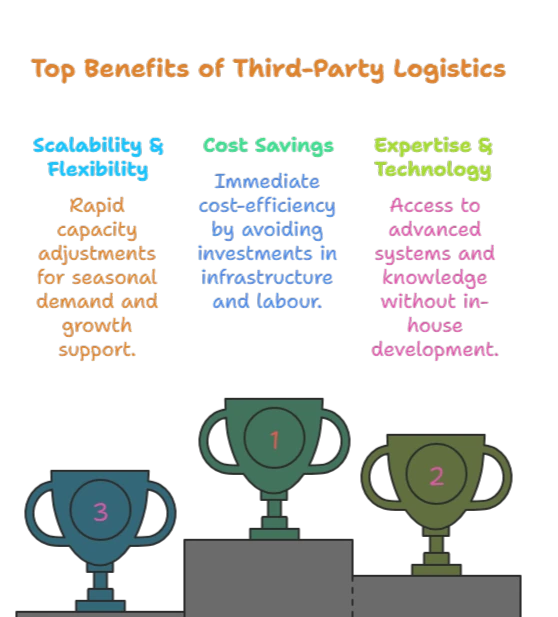
1. Cost savings and CAPEX avoidance.
The most immediate benefit of third-party logistics is cost-efficiency. Instead of investing in warehouses, trucks, labour and IT, companies pay for services as needed. Shared infrastructure spreads fixed costs across multiple clients, making high-quality logistics accessible to SMBs as well as enterprise firms.
2. Access to expertise and technology.
Third-party logistics providers continually invest in WMS, TMS (transportation management systems), automation, and analytics. Clients gain access to these systems and the operator knowledge behind them without building the capability in-house. This accelerates time-to-market for businesses launching in new regions.
3. Scalability and flexibility.
A 3PL allows rapid capacity adjustments. During seasonal demand spikes, holiday sales, or promotional events, providers quickly add labour, storage, and transport capacity so brands don’t need to maintain excess infrastructure year-round. That flexibility supports growth while preserving margin.
4. Risk reduction and compliance.
Logistics involves regulatory complexity, particularly in cross-border trade. Experienced 3PLs handle customs documentation, ensure compliance with safety and environmental rules, and offer insurance and contingency processes — reducing a client’s regulatory and operational exposure.
5.Improved delivery performance and customer experience.
With strategically located distribution centres and optimised routing, 3PLs shorten delivery windows and increase on-time performance. Better fulfilment leads to improved customer satisfaction, which is vital for retention and repeat purchases.
Taken together, these benefits make third-party logistics a strategic lever — not just a back-office cost saver but a growth enabler.
Third party logistics examples — how real companies use 3PL
1. Amazon FBA (Fulfilment by Amazon).
Amazon allows sellers to send inventory to their warehouse centres, and they pick, pack and ship the orders ( nationally or internationally) and also manage the returns. This arrangement enables small sellers to provide Prime-like delivery speeds without having to maintain their own fulfilment infrastructure.
2. DHL Supply Chain.
DHL, a global contract logistics operator, manages multiple client distribution centres (including healthcare cold chain compliant centres and automotive parts sequencing centres), utilising a significant level of automation in the warehouse, coupled with sustainable practices.
3. FedEx Supply Chain.
Traditional integrated logistics company, FedEx SCS, provides solutions to challenging reverse logistics, cross-border fulfilment and industry-specific compliance companies in retail and healthcare, most notably.
4. Regional innovator —
Qodenext ( for exemplification). It enables smart warehousing and digital supply chain tools in focused markets. Qodenext combines IoT tracking, smart labelling, and warehouse automation to enable brands to modernise their operations and get enterprise-grade logistics capabilities without a heavy upfront investment.
Each of the examples is an example of different 3PL models: marketplace-enabled fulfilment, global contract logistics managed, integrated freight & fulfilment services and regional specialised digital providers.
Third party logistics warehousing — deep dive
1. Slotting and storage optimisation.
Today’s warehouses practice data-driven slotting itself: rapidly moving SKUs are designed near pick stations, slow movers are pushed further into the building. This minimises picker travel and allows for faster order turnaround.
2. Automation and robotics.
Many 3PL warehouses are equipped with conveyors, pick-to-light systems, Autonomous Mobile Robots (AMRs), and Automated Storage and Retrieval Systems (AS/RS). They reduce human error, labour dependency, and accelerate the processing.
3. Real-time inventory visibility.
Using IoT sensors, RFID tags, and WMS dashboards, 3PLs can offer clients precise stock levels, shrinkage reports, and in and out movement logs. This visibility enables better decisions for replenishment and reduces stockouts.
Cold chain and compliance. Cold and regulated chain capabilities are a necessity for pharmaceuticals, food, and some chemicals. 3PLs who operate temperature-controlled facilities utilise monitoring, alarms, and strict handling procedures to ensure product integrity.
4. Combined and separate models.
Multiclient (shared) warehouses can be quite cost-effective for small brands. Dedicated sites are better suited for large-scale operations requiring bespoke workflows or brand-specific treatment. Some companies, such as Qodenext, also provide options that are a bit of both: shared infrastructure with dedicated process lanes and digital controls, which let you have cost efficiency and operational separation at the same time.
Challenges and risks of using 3PL — how to avoid common pitfalls
1. Match industry knowledge.
Make sure that the 3PL has established industry experience – cold chain logistics specifically for pharma, reverse logistics specific to apparel, or preparedness of fragile electronics for consumer products.
2. Test the technology and integration.
Call for demo logins, API docs, and your particular WMS integration samples (with your e-commerce, ERP, or OMS).
3. Test the scale of geographic reach.
Team up with vendors who maintain warehouses close to your essential client clusters or hub sites to minimise lead time.
4. Request transparency of demands and SLAs.
Develop transparent KPIs for Leads, Order Accuracy, On-Time Dispatch, Returns Management, and Invoice Visibility.
5. Ask for references, visit sites.
Talk to other customers, observe the vendor’s processes. A small-scale pilot test before rolling out minimises the risk of implementation.
6. Think about scalability and pricing models.
You might also want to think about pay-for-use style prices and the 3PL’s capacity to ramp up to meet rising demand.
7. Check insurance and regulatory status.
Customs brokerage (where relevant), certifications (i.e. GDP for pharma), marine/wake insurance.
When it comes to selecting your 3PL, remember that it is a strategic decision — I like to think of the 3PL as a vendor partner for the long term, not a simple transactional service provider, minimising risk.
How to choose the right 3PL provider — practical checklist
1. Match industry knowledge.
Make sure the 3PL has proven industry experience – cold chain logistics for pharma, reverse logistics for apparel, or handling of fragile goods for consumer electronics.
2. Validate technology and integrations.
Request demo logins, API documentation, and samples of integrations for your particular WMS with your e-commerce, ERP, or OMS.
Evaluate the scale. of geographic coverage. Partner with providers who have warehouses near your key customer clusters or hub locations to shorten lead time.
3. Demand transparency and SLAs.
Establish transparent KPIs around leads, order accuracy, on-time dispatch, returns management, and invoice visibility.
Ask for references, visit sites. Consult other customers, audit the provider’s processes. A brief pilot test before rolling out mitigates implementation risk.
4. Consider scalability and pricing models.
Consider pay-for-use type pricing and the 3PL’s ability to scale capacity to meet increased demand.
Verify insurance and compliance. Check on customs brokerage (if applicable), certifications (i.e. GDP for pharma), and cargo/wake insurance.
Choosing the right 3PL is a strategic choice — think of it as selecting a vendor partner for the long haul, rather than a mere transactional supplier.
The future of third party logistics — tech, sustainability and e-commerce
Three trends will shape the next phase of 3PL evolution:
1. Smarter operations through AI and automation.
Machine learning improves demand forecasting, dynamic slotting, and route optimisation. Robotics and AMRs will continue to replace repetitive manual tasks, allowing human staff to focus on exceptions.
2. Traceability and trust through blockchain and better data.
Distributed ledgers and improved tracking will assist with recalls, provenance verification, and clear supplier audits, especially in regulated industries.
3. Green logistics and circular practices.
Pressure from regulators and consumers will drive the use of electric delivery fleets, energy-efficient warehouses, recyclable packaging, and reverse logistics that restore product value.
E-commerce’s ongoing growth, expected to account for over a quarter of retail sales in the coming years (Statista), will further increase demand for agile, tech-enabled 3PL networks. Forward-looking providers, including regional tech-enabled players like Qodenext, that invest in IoT, automation, and sustainability, will set the standard for next-generation logistics. (Statista)
Conclusion — turning logistics into a strategic asset
What exactly is third party logistics? In one sentence: 3PL is the strategic delegation of logistics services to third-party providers, which allows organisations to grow faster, reduce capital expenditure and enhance customer service. The meaning of third party logistics goes far beyond saving money – it’s about speed, resilience, and the ability to tap into features that would otherwise necessitate significant operational expenditures. Whether you’re a marketplace seller using Amazon FBA, a multinational leveraging DHL or FedEx, or a regional brand modernising operations with a provider like Qodenext, the ideal 3PL partner can turn your logistics from a liability into a competitive advantage.
If you are thinking of using a 3PL, start with a pilot, have clear SLAs, and go for providers that are technology and compliance-ready. It turns a transactional outsourcing decision into a growth strategy for the long term.
Frequently Asked Questions (SEO-focused & based on real search intent)
Q1. What does third party logistics include?
Third-party logistics includes warehousing, which covers receiving, storage, and picking. It also involves transportation for local and cross-border freight, order fulfilment, reverse logistics for returns handling, and often customs brokerage and compliance services.
Q2. What is the difference between 3PL and 4PL?
3PL handles logistics tasks such as warehousing, freight, and fulfilment. In contrast, 4PL manages the entire supply chain for the client. It often coordinates multiple 3PLs and carriers to provide integrated logistics solutions.
Q3. How does third party logistics warehousing work?
3PL warehousing receives inbound stock and uses WMS for inventory control. It optimises SKU placement for quicker picking and ships orders as they come in. Modern 3PL warehouses employ automation, RFID/IoT tracking, and analytics to improve accuracy and throughput.
Q4. Are 3PL services cost-effective for small businesses?
Yes, 3PL services give small businesses access to enterprise-level logistics without the need for large upfront investments. Multi-client warehousing and pay-as-you-go pricing models make high-quality fulfilment affordable.
Q5. How do I evaluate 3PL pricing and avoid hidden fees?
Request a complete sample invoice and review the triggers for surcharges, such as storage minimums, dimensional weight rules, and peak season fees. Make sure the contract includes clear billing, dispute resolution, and regular invoice audits.
Q6. What does third party logistics mean?
The definition of third-party logistics (3PL) is the individual or company that provides logistics services to other businesses, such as warehousing, shipping, and order fulfilment. This enables companies to reduce costs, increase efficiency, and dedicate themselves to their main line of business.
Q7.What is third party logistics in supply chain management?
Third-party logistics is a business arrangement in which a company uses another company to perform some or all of its logistics functions. This might comprise transportation, storage, inventory control, and processing returns.
Q8.What is 3PL warehousing and logistics?
Third-party logistics warehousing: It refers to the storage of your inventory in someone else’s warehouse rather than having your own. The 3PL holds inventory, picks and packs orders, and ships them out to customers, sometimes utilising sophisticated tools such as WMS and IoT tracking.
Q9. Can you give some examples of third party logistics?
Popular third-party logistics examples include:
- Amazon FBA – fulfilment for online sellers
- DHL Supply Chain – global warehousing & distribution
- FedEx Supply Chain – reverse logistics & compliance
Qodenext (India) – IoT-enabled warehousing & automation solutions
